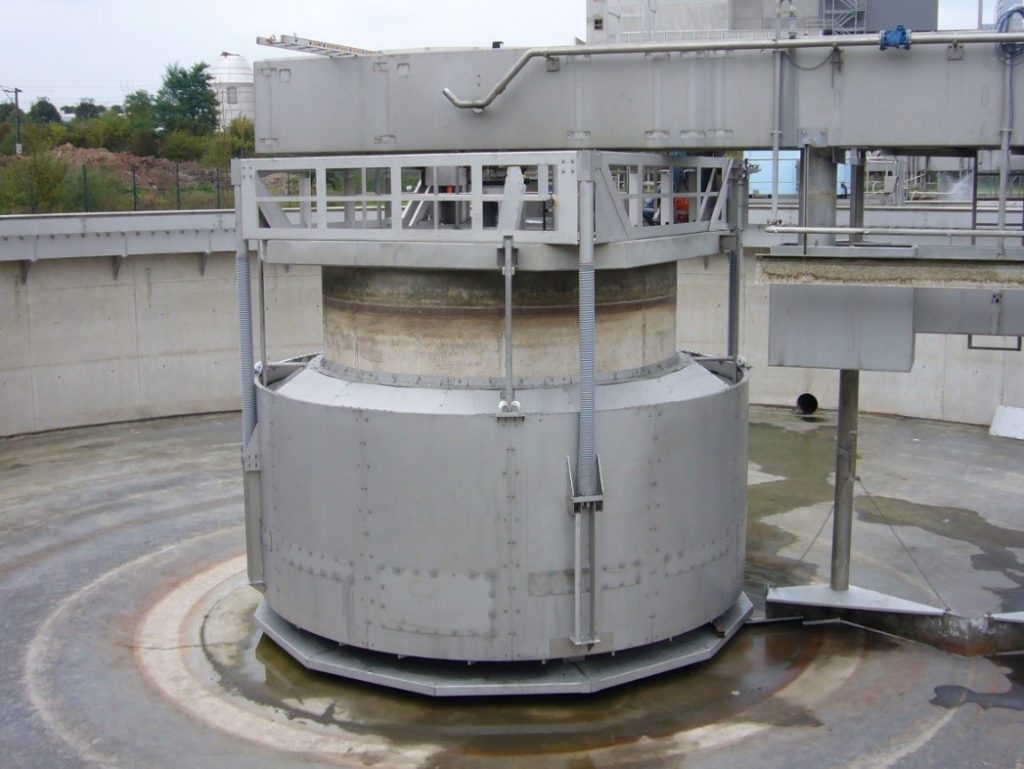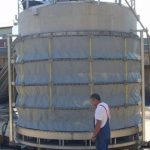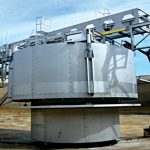In secondary settling tanks, sewage is clarified and the sludge is thickened by separating the activated sludge from the treated sewage. Unlike primary settling tanks, the suspension in secondary settling tanks is difficult to sediment (the specific gravity of the sludge is similar to the weight of water). At the same time, due to the fact that secondary settling tanks are usually the final element of each sewage treatment plant, they are required to have high sewage clarification efficiency ensuring the reduction of suspension even to 99%.
In general, the main operational difficulties of secondary settling tanks are manifested by problems in maintaining the proper sewage clarification process. The effect of this is suspension flowing out of the settling tank along with the accompanying exceedance of phosphorus compounds.

Hydrograv – principle of operation
The development of modelling fields and many years of work on the hydraulic model of the secondary settling tank operation allowed for the identification of the main cause of the work arduousness, which turned out to be – fixed sewage inflow column.
The location of the sewage inflow above the sludge blanket causes the formation of so-called "clouds" of sludge due to the inflow of sewage from the top downwards and the washing out of the upper layer of thickened sludge. Often in such cases the main sludge stream bounces off the settling tank wall causing a second "hit" on the thickened sludge layer. A partial solution to this problem is the construction of special deflectors attached to the lower part of the overflow channels. The location of the sewage inflow located significantly below the sludge blanket causes the washing out of thickened sludge from the settling tank, especially when a larger amount of sewage flows through the settling tank (e.g. rains lasting several days). In such a case, the larger flow causes the "nozzle effect" and washing out of well-thickened sludge into the receiver. Therefore, being aware that there is no treatment plant in which the technological parameters important for the operation of the secondary settling tank do not change to a greater or lesser extent over time, engineers from Hydrograv came to the conclusion that a fixed inflow column is not able to ensure the correct operation of the settling tank (i.e. ensuring the introduction of sewage just below the sludge shell). The solution to the problem turned out to be an adjustable inflow column – the Hydrograv Adapt type..
After obtaining all the output data from the investor regarding the operation of the treatment plant from a period of several years, a special simulation of the controller's operation is created based on computational fluid dynamics (CFD). Only an individual program (map) created in this way each time allows for proper control of the controller. Control does not take place in the function of measuring the sludge blanket (this measurement is only used to verify the operation of the system), but on the basis of process data obtained online, such as current flow, sludge concentration, temperature, sludge index, recirculation degree. Thanks to this, the device can, in a sense, read the future trend and can adapt to the required parameters. In addition to regulating the inflow height, the device also adjusts the size of the inflow opening, maintaining the separation between clear sewage and the sludge layer with a separated blanket throughout its range.
Therefore, the correct method of operation is mainly determined by the special controller operation program created each time, which maps the operating parameters of the existing object (operation map) with specific parameters.
Hydrograv - operational benefits
The use of a Hydrograv flow regulator allows:
- improving the operation of secondary settling tanks along with increasing efficiency even in the case of long-term occurrence of unfavourable technological parameters,
- doubling the efficiency of settlers,
- limiting uncontrolled discharges of sediment into the receiver,
- overall reduction of phosphorus and COD in the effluent (by limiting suspended solids in the effluent).
For more information, please see the pdf file.
Inflow regulators for secondary settling tanks
Product

Sale options


purchase
Ask for details
Contact a specialist dedicated to this product
Arkadiusz Witak
+48 885 805 502
e-mail: arkadiusz.witak@proffico.com
References

Advantages of the offered device
Case study






